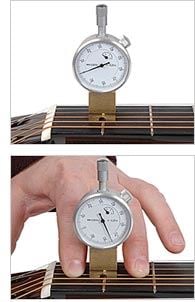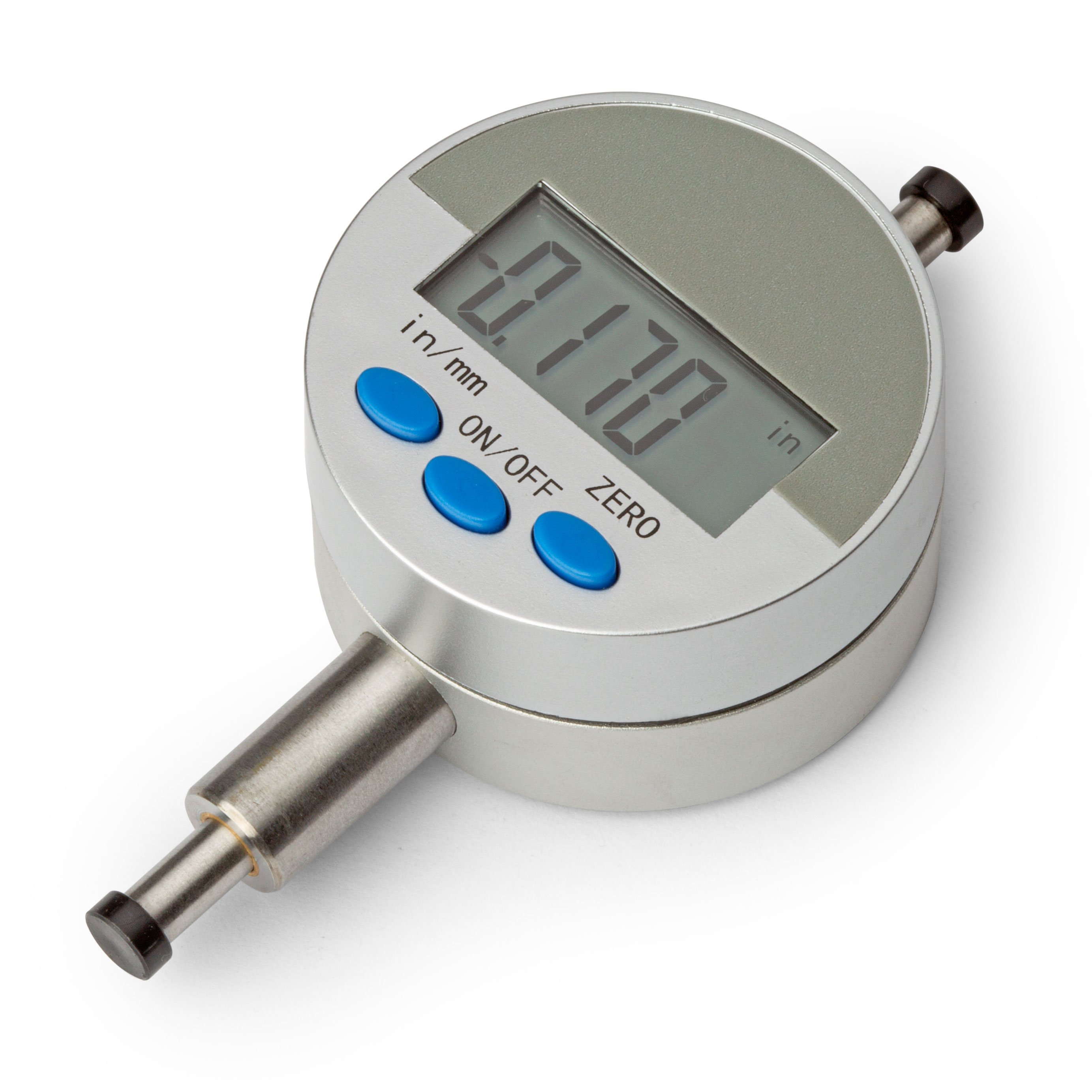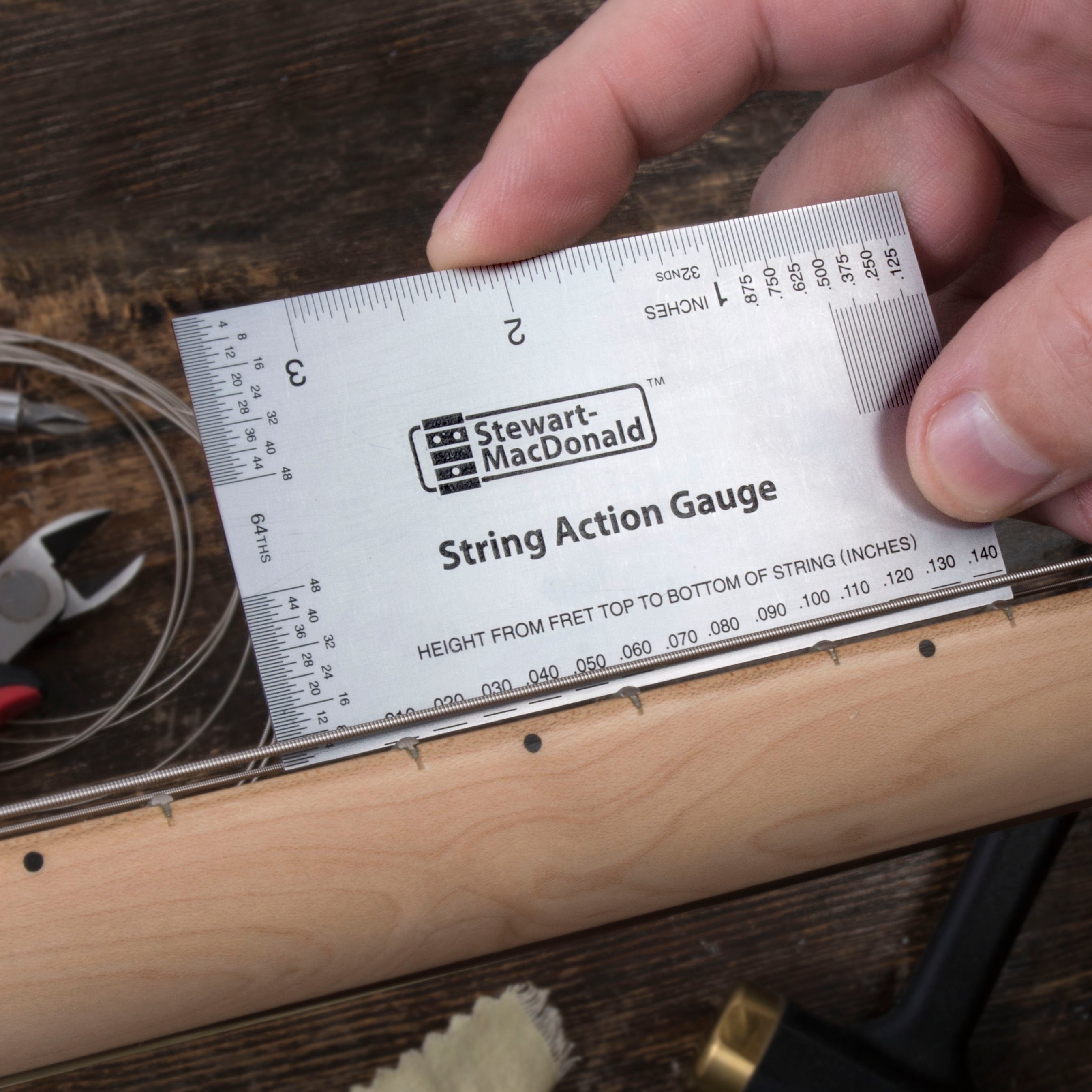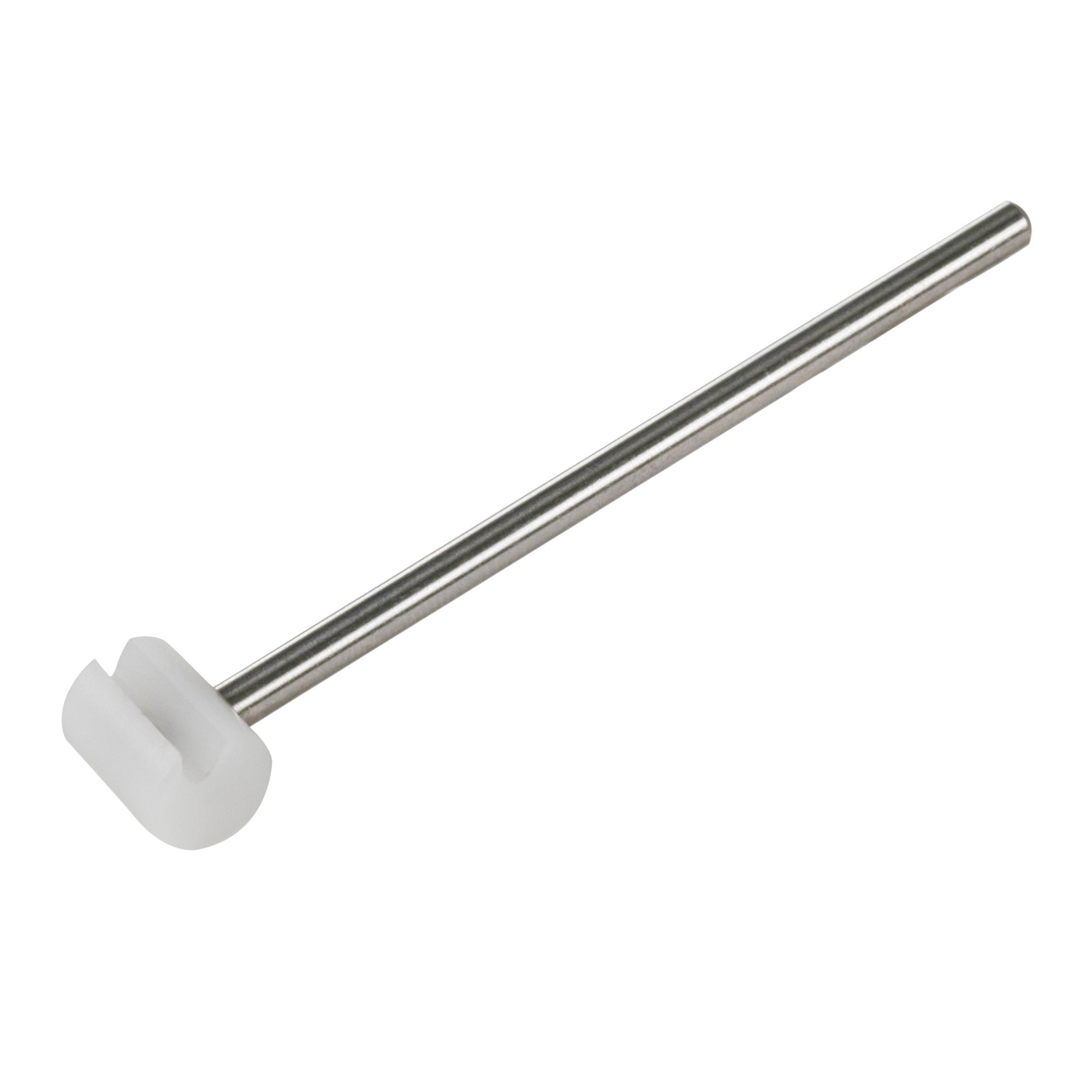Nut Slotting Gauge Instructions
How to determine nut slot depth with the Nut Slotting Gauge.
I-2003
 The Nut Slotting Gauge precisely measures the heights of the strings over the first fret, so you can cut accurate string slots.
The Nut Slotting Gauge precisely measures the heights of the strings over the first fret, so you can cut accurate string slots.
Now you can upgrade! Get a digital indicator for your current gauge for even faster and more precise measurements. We also have the Digital Nut Slotting Gauge with the digital indicator already included.
Your most accurate measurement is at the first fret. Although this tool can be placed at other points along the neck, we recommend using it at the first fret for maximum accuracy. The proximity to the nut keeps the string rigid at the first fret, and gives the most accurate reading. As you move up the neck (the 12th fret, for example), the string is much less rigid. Even the weight of the dial indicator's plunger is enough to push the string down, giving a false reading. For taking measurements higher up the neck, we recommend the String Action Gauge.Step 1: Set the Nut Slotting Gauge over the first fret, with the indicator tip resting on the middle of a string. To zero the dial indicator, loosen the dial lock (located at the approximate 1 o'clock position of the dial). Turn the knurled dial face so the zero mark is lined up with the needle and re-tighten the dial lock. Note that for most applications, the zero will not be in the 12 o'clock position.
Press the string down to the first fret. Press on both sides of the fret, to be sure you get an accurate reading. The dial now indicates the height of the string over the first fret.
Step 2: Pull the string out of the nut slot (our #4803 String Lifter is a great time-saver). File the slot deeper, replace the string and take another reading. Repeat until you reach the height you need. Note: If the strings are too high at the first fret they can be difficult to play, and if they're too low they can buzz. The strings on electric guitars can generally be closer to the first fret than on acoustics. This is also true for players with a lighter touch vs. players with an aggressive style. The bass strings should be gradually higher in the nut than the treble strings.
Step 3: Move the gauge to each of the remaining strings and follow the same procedure. The thumbscrew that holds the dial indicator post in place can be loosened, and the indicator rotated 180 degrees. This lets you keep all of the gauge's feet on the fretboard and still view the dial from the same side as you move the gauge across the neck.


